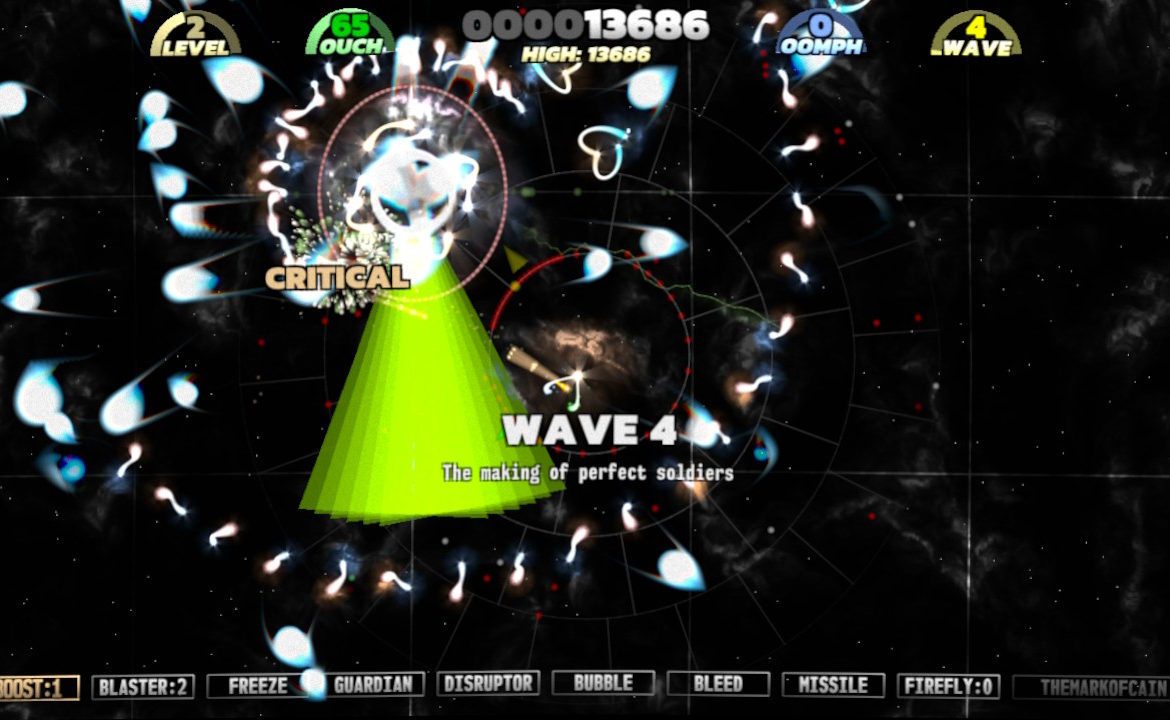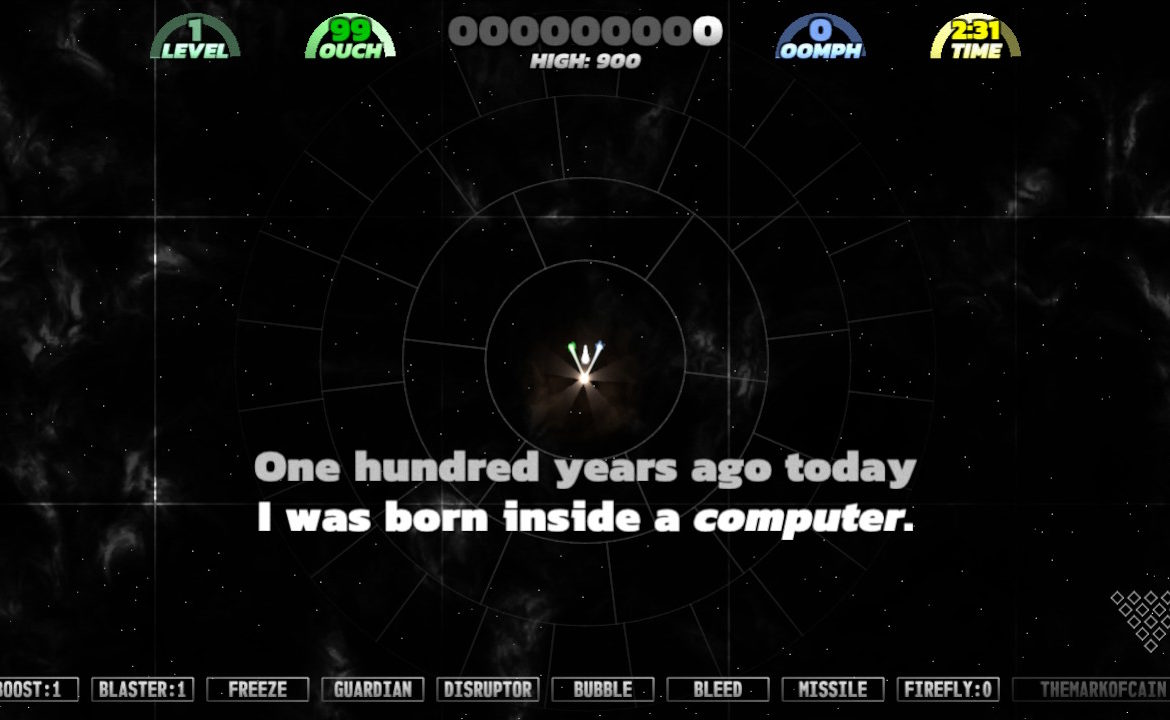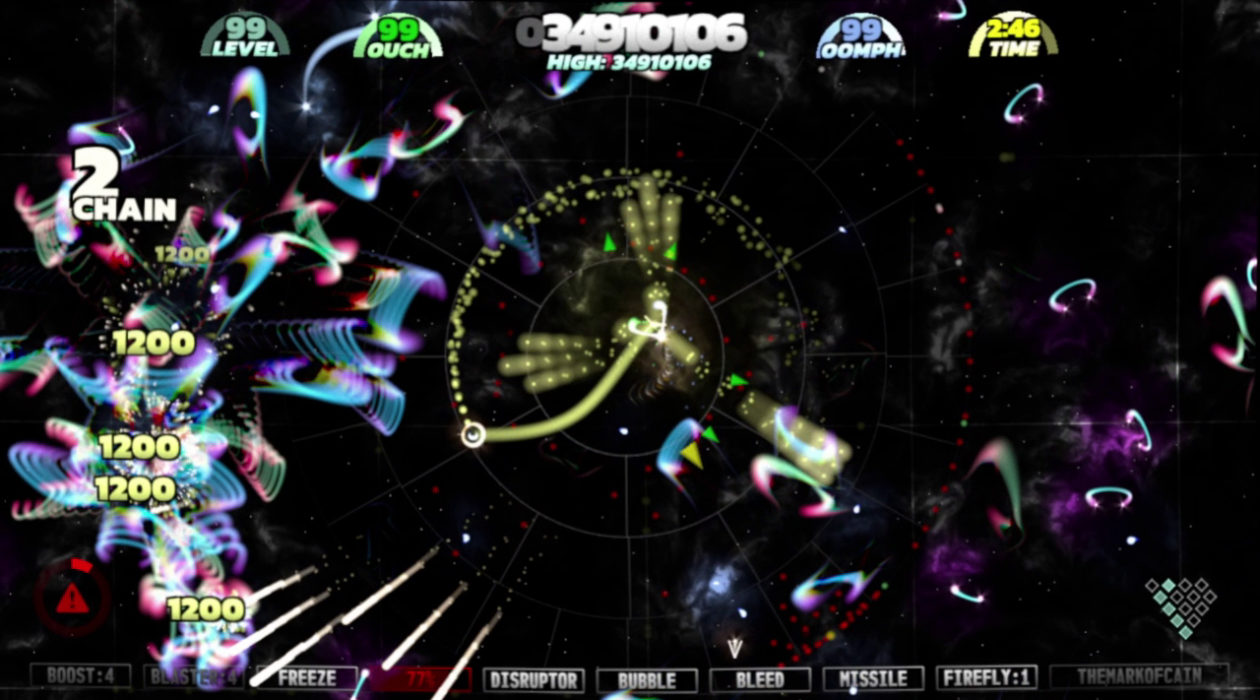Do you ever play a game and think you’ve done this somewhere before? It’s right on the tip of your tongue, but you can’t quite remember. Or you’ve seen an advert for it, but you know the game it looks like but it’s a distant memory. Don’t worry, I’ll help you with this one: Bezier: Second Edition is essentially Geometry Wars.
The concept of using mathematical and geometric shapes may not be an inherently new one, but that’s not a bad thing. Imitation is the sincerest form of flattery, after all.
While on the service it may look remarkably similar, Bezier does have a few tweaks and variations that marginally distinguishes it from its popular counterpart. So as long as you aren’t expecting technical math jargon, let’s find out what they are.

Copying Patterns
If you were an early Xbox 360 owner, chances are you’ve played Geometry Wars. They were tucked away not-so discreetly in the Project Gotham racing games, or available after a fashion on Xbox Live Arcade.
The PS2 had Fantavision as their “tech demo”, the Xbox had Geometry Wars. It’s gameplay was simple yet addictive: guide a geometric shape across a grid, shooting at anything that isn’t you and try not to do. Essentially, it looked an updated version of Asteroids.
Next to Hexic HD, it was one of the most popular games going, and for good reason. It was addictively fun and a spectacle to see. Coming at the time of high(er) definition gaming TV’s, watching geometric shapes pull off lavish explosions and brightness was great. Particle explosions in particular were a treat, a feast for the eyeballs as it were.
So, what’s the point in this little recap, and how does it apply to Bezier?

Blasting Into The Modern Day
Well, as I said earlier, Bezier: Second Edition is Geometry Wars. There may be some changes that add an air of accessibility or challenge, but the premise is the same. But none of the comparisons have been negative, in fact they’re quite the opposite.
The main concept of Bezier is quite straightforward, continuing the “legacy” of twin-stick shooters that its counterpart brought into prominence. As it sounds, you use the left thumbstick for navigation and the right for shooting. Played from a top-down perspective, you have full 360° control over both movement and shooting. You have a pointy ship-like embodiment of the main character (we’ll get to that) and as it turns out, you’re quite attached to him.
So in order to keep it/him alive, you have you keep on movin’ and shootin’ everything that comes at you with malicious intent. Which is pretty much everything. There are occasional moments of calm, where you’ve cleared an area of enemies, that you get a chance to breathe. But it’s like playing tag: you never, ever want to stay still for too long.

Feeling Pretty Special
What makes life easier in Bezier are the assists and special weapons you utilise along the way. To start with, you have an auto-aim function with a cooldown. It’s not ironclad, but if you’re charging in and shooting in one direction, a short burst of auto-aimed fire will take on those on your flank. Or, if you’re fleeing, it’s a quick reprieve from those giving chase.
In terms of pickups, there’s your standard variety of passive and offensive tricks you can use. By passive, I mean shields and boosts for tanking hits and running away, respectively. In offensive terms (as in weapons, not harsh language) you’ve got your usual offenders, all with fancy names. There’s abilities that freeze enemies, disruptive blasts, energy draining capabilities and then some.
There’s also a health bar in this game, rather than the “one and done” approach of other games. Called Ouch in this instance, you start with ninety nine Ouch and die when you’re all out of Ouch. I don’t know why life would be called Ouch, but it’s memorable enough that I’ve said Ouch four times in two sentences. Anyway, you restore Ouch with pickups, lest you fancy living dangerously and avoid them.

Am I Man Or Machine?
So, that story I mentioned near the start? It’s… a strange one. Well, it’s twofold strange: why does this game need a story, and what is it about? To answer the first one, I guess it adds a bit of attachment and gravitas if your ship-thing has a humanised element to it.
As for what it’s about, I haven’t the foggiest. Whilst that sounds like laziness on my part, it’s honestly not for lack of trying. Bezier has one of those “organic stories” that plays out the further you progress. So naturally, like me, if you’re not very good at these kind of games you won’t be uncovering the mystery.
The website boasts a story of a professor escaping his own “Noah’s Ark”, with a deeper narrative focus on his “relationship with evolution and god, family and love”. Extrapolate from that what you will, as I can’t even pretend to spoil it for you.
It doesn’t really change much in terms of gameplay, barring the level selections seen a few pictures up. This changes the narrative ever so slightly, but in terms of “shoot all the shapes that aren’t you”, it’s still the same.

Throwing Shapes
As much as I don’t want to keep harping on with the comparison, I can easily recommend Bezier if you liked Geometry Wars. It is, in essence, the same game, albeit with differing power-ups and a more lenient health/life system.
But if you haven’t played Geometry Wars, I’m still going to recommend it. There’s enough life in its Campaign and Endurance modes to garner that “one more try” approach to it. The Daily mode, pictured above, adds funky little trivia on the day you’re playing it. Saying that, the one above is a bit… iffy, if you know.
It’s got a cracking techno/vaporwave hybrid soundtrack, that relaxes when you do yet steps up the beat when it get hairy. Visually, it’s dazzling, and I’m only playing the handheld version. It won’t be pushing 4K levels of “Oooooh”, but it’ll certainly captivate you whilst you’re fighting for your life. Or your ship’s life, or whatever it/he is. I’m still not sure, I need more practice.
Bezier: Second Edition may hit or miss with its strange narrative, but push that aside and there’s a dazzling arcade shooter in there. Twitchy reflexes and a keen eye are needed if you’re to reach those high scores.

Bezier: Second Edition is launching on Nintendo Switch (reviewed on Switch Lite) on January 21st, 2021.
Developer: Niine Games
Publisher: Thalamus Digital
Disclaimer: In order to complete this review, we were provided with a promotional copy of the game. For our full review policy, please go here.
If you enjoyed this article or any more of our content, please consider our Patreon.
Make sure to follow Finger Guns on our social channels –Twitter, Facebook, Twitch, Spotify or Apple Podcasts – to keep up to date on our news, reviews and features.
